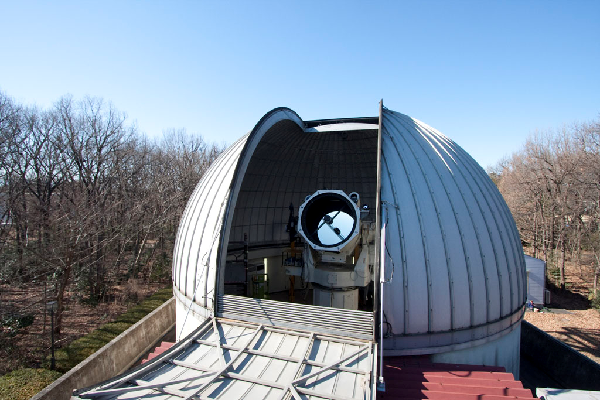Based on this agreement, NICT and CNES will study not only implementation of a new space collaborative experiment specifically in the 1.5 µm band which is considered as a preferred choice for LEO to ground laser communication links in the space laser communication field, but also promoting collaboration effectively, and cooperate together in all of common interest such as satellite communications, time and frequency metrology, and remote sensing of Earth's environment from satellites.
Home > Press Release > Framework Agreement for Cooperation Signed with CNES
The National Institute of Information and Communications Technology (NICT, President: Dr. Hideo Miyahara) and the Centre National d’Etudes Spatiales (CNES, President: Mr. Yannick d’Escatha) have signed the agreement providing the international cooperation framework in the field of information and communication technology, especially space technologies and its applications at the headquarters of the CNES in Paris on November 12, 2012.

Appendix
Space laser communication technology is the technology to communicate between distant platforms using laser beams (i.e. optical waves) instead of radio waves with the advent of optical technologies such as optical communication technology including optical fibers, laser sources, and so on. It has the ability to transmit a large volume of data at high data rates, to reduce satellite’s size and weight, and to operate without interference.
It is expected that the development of technology employing ultrahigh-speed optical data transmission between LEOs (Low Earth Orbits) and ground stations is as influential means of communication methods for retrieving Earth observation data all around the globe and establishing communication links including manned space stations, which correspond to space applications required for high speed data transmission in the future.
In order to collaborate with other countries and participate in international research, NICT established the "Space Optical Ground Station Center" in 1988 as a center for Japanese research in optical communications. This center has a telescope of 1.5 m in diameter with a main mirror having a 1.5 m aperture, which is the largest telescope in Japan, capable of tracking satellites.
Using this telescope, NICT is conducting advanced research on measurement technology and on the collection and detection of very weak lights from space and satellites, for laser optical communications.

Contact regarding the agreement
Yasuhiro Koyama and Takashi Sugawara
International Relations Office
International Affairs Department
Tel: +81-42-327-7166
E-mail: 




















Media contact
Sachiko Hirota
Public Relations Department
Tel: +81-42-327-6923
E-mail: 


























